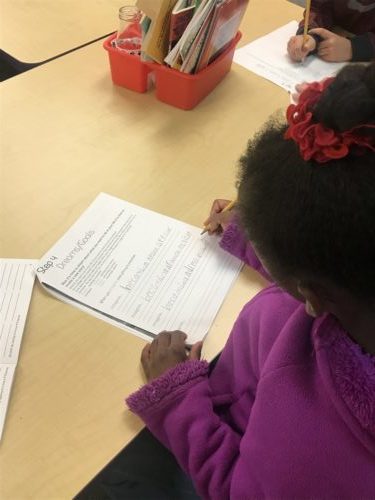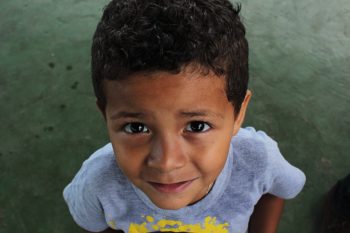 As parents and teachers we often see our kids struggling with issues that challenge their ability to cope. It may be keeping up in school, coping with friendship changes, or the trials of social media. We are always looking for tools to support our precious children (and ourselves). The Imagine Project writing activity is a wonderful tool for allowing kids to express their emotions and work through difficult times. Emotional Freedom Technique (EFT, also called Tapping) is another tool that is simple and easy to implement with your kids/students, and even use on yourself. Here is an overview of how EFT/tapping works and how it supports The Imagine Project writing activity. If you’d like more information, see The Imagine Project: Empowering Kids to Rise Above Drama, Trauma and Stress (Yampa Valley Publishing, 2018).
As parents and teachers we often see our kids struggling with issues that challenge their ability to cope. It may be keeping up in school, coping with friendship changes, or the trials of social media. We are always looking for tools to support our precious children (and ourselves). The Imagine Project writing activity is a wonderful tool for allowing kids to express their emotions and work through difficult times. Emotional Freedom Technique (EFT, also called Tapping) is another tool that is simple and easy to implement with your kids/students, and even use on yourself. Here is an overview of how EFT/tapping works and how it supports The Imagine Project writing activity. If you’d like more information, see The Imagine Project: Empowering Kids to Rise Above Drama, Trauma and Stress (Yampa Valley Publishing, 2018).
Tapping is based on the principles of Chinese medicine where energy runs through the body via energetic meridians, much like how blood runs through veins and arteries. There are energetic points on the body that are specific to various emotions and physical organ functions. If there is negative energy stuck in or around those points, it can alter our health and wellbeing.
When we experience a difficult emotion, it can often leave a negative energetic imprint in our bodies. If we don’t release it, that negative energy can lead to long-term issues with mental and physical health. In EFT we are taught to tap on specific points on the body and state our emotions out loud as we tap. As we tap we are talking to our subconscious, allowing us to acknowledge our feelings and therefore let go of the negative imprint. Healthy energy then begins to flow freely again and we feel better emotionally and physically.
During Step 3 of The Imagine Project writing process, emotion can often begin bubbling up. It’s very positive to feel emotion, emotions help us process and move forward. Tapping can help us let go of those emotions more quickly as we write and acknowledge how we feel. It’s not necessary to use tapping with the writing, but it can help. I encourage you to give it a try by checking out these resources: The Tapping Solution (website and app), Brad Yates YouTube videos, and Peta Stapleton classes for teachers. You can easily teach yourself or take classes online or in person.
There is a great deal of quality research around the positive effects of tapping for many, many different issues. The research shows improvement in anxiety, depression, chronic pain, as well as many other health issues. If you are interested, Google research with Emotional Freedom Technique/Tapping and you will find a wealth of information.
Teaching ourselves and our youth to tap so they can have a simple and effective tool to use for support, along with The Imagine Project writing process is powerful for them now and in their futuer. As they move through difficult life circumstances these tools can help them feel more comfortable in school, with friends, even in sports! Use it along with The Imagine Project writing process with your children or students!
Good luck and happy Tapping!
Love,
Dianne
The Imagine Project, Inc., a nonprofit organization that helps kids, teens, and adults overcome challenging life circumstances through expressive writing. Dianne is a thought leader in the area of stress and trauma in children. Her simple, yet profound 7-step writing tool, now used by schools across the US, gives kids and teens the opportunity to rewrite a challenging personal story and Imagine new possibilities in its place.

 Ugh, yet another school shooting. Our hearts are all breaking once again. When will it ever end? What are the solutions? How can we help? We could debate this subject for days, but staying out of politics, I would like to offer a tool that is at least part of the solution.
Ugh, yet another school shooting. Our hearts are all breaking once again. When will it ever end? What are the solutions? How can we help? We could debate this subject for days, but staying out of politics, I would like to offer a tool that is at least part of the solution. 
 A very important question all parents, teachers, counselors, youth leaders, etc. must always be asking is, “How do we teach our kids to be resilient?” Resilience is so important when trying to navigate and succeed in our complicated world. Research shows stress is growing with our younger generations. Social media, faster moving information, pressures from peers, parents, and education is intensifying quickly. Knowing how to teach our kids to cope with life and become resilient is critical to their ability to overcome stress and become resilient in their lives.
A very important question all parents, teachers, counselors, youth leaders, etc. must always be asking is, “How do we teach our kids to be resilient?” Resilience is so important when trying to navigate and succeed in our complicated world. Research shows stress is growing with our younger generations. Social media, faster moving information, pressures from peers, parents, and education is intensifying quickly. Knowing how to teach our kids to cope with life and become resilient is critical to their ability to overcome stress and become resilient in their lives. Sadly, anyone with a child, friend, or relative in a school today worries if they will be safe. Unfortunately, the fear of a student being hurt by gun violence has become very real and prevalent. After picking ourselves up from yet another school shooting we have to seriously look at what we can do to help dissolve this horrific issue.
Sadly, anyone with a child, friend, or relative in a school today worries if they will be safe. Unfortunately, the fear of a student being hurt by gun violence has become very real and prevalent. After picking ourselves up from yet another school shooting we have to seriously look at what we can do to help dissolve this horrific issue.
